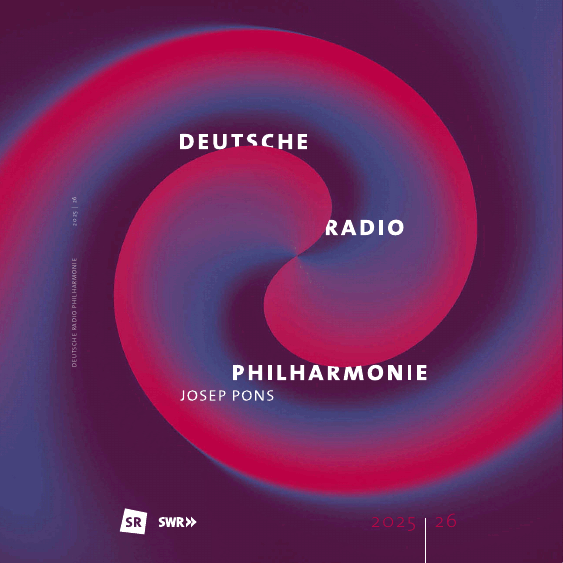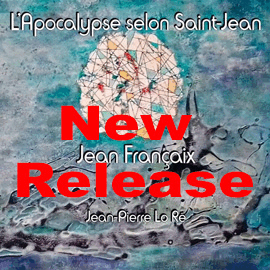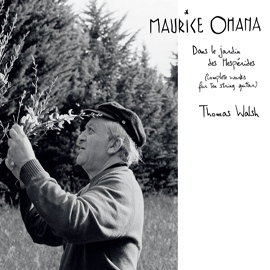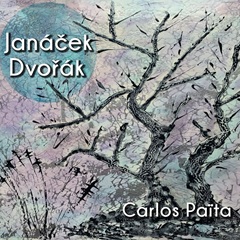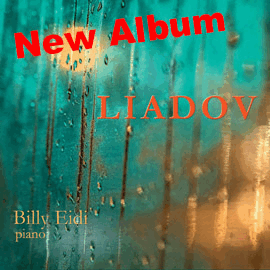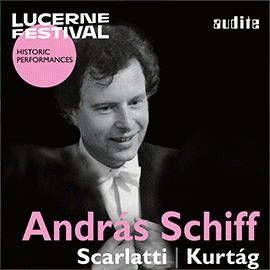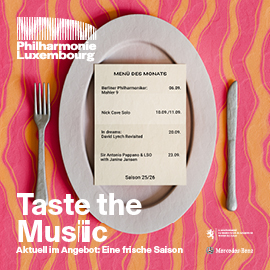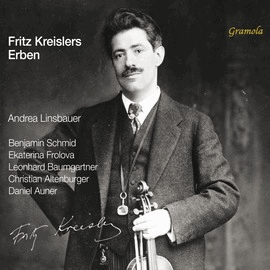Dieses Doppelalbum beginnt mit einer phänomenalen Aufführung der 7. Symphonie von Antonin Dvorak. Sie hat Energie, Intensität, lebt aber mehr noch von den Stimmungswechseln, die von temperamentvollem Enthusiasmus zu tiefster Beklemmung reichen. Gerade die düsteren Passagen im ersten Satz wertet Païta so auf, dass sie ein neues Licht auf diese Musik werfen.
Païta zeigt in der Siebten, wie auch in den übrigen Werken, dass Dvoraks Symphonien mehr sind als brillante Orchesterstücke, die nur Bilder aufkommen lassen, aber nichts Tieferes zu sagen haben. Hier wird die Tiefe voll ergründet! Païtas Dvorak, das ist eine Musik von frenetischer Intensität, voller Spannung und innerer Bewegtheit, eine Musik, die geprägt ist von Sensibilität und Leidenschaftlichkeit.
Die 7. Symphonie ist dafür beispielgebend: Der Dirigent schafft es über alle vier Sätze hinweg, einen großen Bogen zu spannen. Das hinreißend musizierende Orchester führt er mit Schwung und Glanz durch das Werk, dessen Wichtigkeit, dessen Größe sich einem erst durch diese Interpretation so richtig einprägen.
Bei Dvoraks Achter gelingt dem Argentinier eine sehr ausgeglichene Mischung aus dramatischer Gestaltung, volkstümlichen Momenten und orchestraler Brillanz. Einmal mehr beeindrucken die Intensität des Musizierens und vor allem die Farben, die Païta als musikalischen Chagall zeigen. Die Holzbläser des Royal Philharmonic brillieren unter Païtas suggestiven Händen.
Und wenn der Zuhörer nie in eine Musik der Beliebigkeit entlassen wird, sondern ständig unter Spannung bleibt, so sind auch hier neben den Farbbouquets die Momente der Nostalgie und des Trübsinns besonders packend, so etwa im langsamen Satz, der von einem fesselnden Kontrasten zwischen Hell und Dunkel geprägt wird.
Das tänzerische und von Farben strotzende Finale krönt diese Interpretation, eine der besten, die ich kenne. Païta wählt dabei recht gemäßigte Tempi, setzt also nicht auf die immer zündende Wirkung von ‘schnell und laut’, sondern überzeugt mit Stimmungsunterschieden, wunderbar ausgekosteten Momenten der Schwermut und Farbsprühen. Païta straft jedenfalls alle die Lügen, die diese Symphonie als völlig unbeschwert ansehen.
Mit einem aufregenden Kontrast zwischen der sehr langsam dirigierten Einleitung und dem Allegro molto beginnt Païta eine ebenfalls herausragende Neunte. Auch in diesem Satz passiert mehr, als andere Dirigenten herausgeholt haben. Die Musik ist nicht oberflächlich brillant, sondern dramatisch aufgewühlt.
Kantable Ruhe und eine absolut wundervolle Atmosphäre charakterisieren den langsamen Satz. Païta liegt mit fast 16 Minuten deutlich über dem 12′-Durchschnitt und mittig zwischen Bernsteins erster Aufnahme (14’43) und dessen Wiener Einspielung (18’22).
Umso alerter und energetischer folgt dann das Scherzo, mit einem fein differenzierten Trio und einem kurzen, düsteren Grollen kurz vor Schluss. Das Allegro con fuoco lebt von Dynamik und Farben, ohne ins Drängen zu fallen. Païta nimmt sich die Zeit, alle Figuren emphatisch zu gestalten, so dass der Satz von viel mehr lebt als nur von kinetischer Energie.
Nicht weniger aufregend und elektrisierend ist die Darbietung der dreisätzigen Taras Bulba-Rhapsodie nach Gogols Novelle von Leos Janacek. Païtas Taras Bulba ist derart spannungsvoll und packend dirigiert, dass sie alle anderen uns vorliegenden Interpretationen, inklusive jener Simon Rattles, in den Schatten stellt. Wir hören geistig und emotional vertiefte musikalische Schicksalsbeschreibungen, wie man sie sich eindringlicher nicht vorstellen kann.
This double album begins with a phenomenal performance of Antonin Dvorak’s 7th Symphony. It has energy and intensity, but lives even more from the changes in mood, which range from spirited enthusiasm to deepest anxiety. Païta enhances the sombre passages in the first movement in particular, shedding new light on this music.
In the Seventh, as in the other works, Païta shows that Dvorak’s symphonies are more than just brilliant orchestral pieces that only conjure up images but have nothing deeper to say. Here the depth is fully explored! Païtas Dvorak is music of frenetic intensity, full of tension and inner movement, music that is characterized by sensitivity and passion.
The 7th Symphony is exemplary of this: the conductor manages to create a great arc across all four movements. He leads the captivating orchestra with verve and brilliance through the work, the importance and grandeur of which only become truly memorable through this interpretation.
In Dvorak’s Eighth, the Argentinian achieves a very balanced mixture of drama, folkloristic moments and orchestral brilliance. Once again, the intensity of the music-making and, above all, the colors that show Païta as a musical Chagall are impressive. The woodwinds of the Royal Philharmonic shine under Païta’s suggestive hands.
And if the listener is never released into a music of arbitrariness, but remains constantly under tension, the moments of nostalgia and gloom are also particularly gripping here alongside the color bouquets, for example in the slow movement, which is characterized by a captivating contrast between light and dark.
The dance-like finale, bursting with color, crowns this interpretation, one of the best I know. Païta chooses quite moderate tempi, so he doesn’t rely on the effect of ‘fast and loud’, but convinces with differences in mood, wonderfully savored moments of melancholy and great sprays of color. Païta certainly gives the lie to all those who consider this symphony to be completely light-hearted.
Païta begins an equally outstanding Ninth with an exciting contrast between the very slowly conducted introduction and the Allegro molto. In this movement, too, more happens than other conductors have achieved. The music is not superficially brilliant but dramatically agitated.
Cantabile calm and an absolutely wonderful atmosphere characterize the slow movement. At almost 16 minutes, Païta is well above the 12′ average and midway between Bernstein’s first recording (14’43) and his Vienna recording (18’22).
By contrast, the Scherzo becomes all the more exciting and energetic, with a finely differentiated trio and a brief dark rumble shortly before the end. The Allegro con fuoco is full of dynamics and colors without falling into a rush. Païta takes the time to shape all the figures emphatically, so that the movement lives from much more than just kinetic energy.
No less exciting and electrifying is the performance of the three-movement Taras Bulba Rhapsody based on Gogol’s novella by Leos Janacek. Païta’s Taras Bulba is so exciting and grippingly conducted that it puts all other interpretations available to us, including Simon Rattle’s, in the shade. We hear mentally and emotionally profound musical descriptions of fate that could not be more haunting.



